Stealth on Small Streams
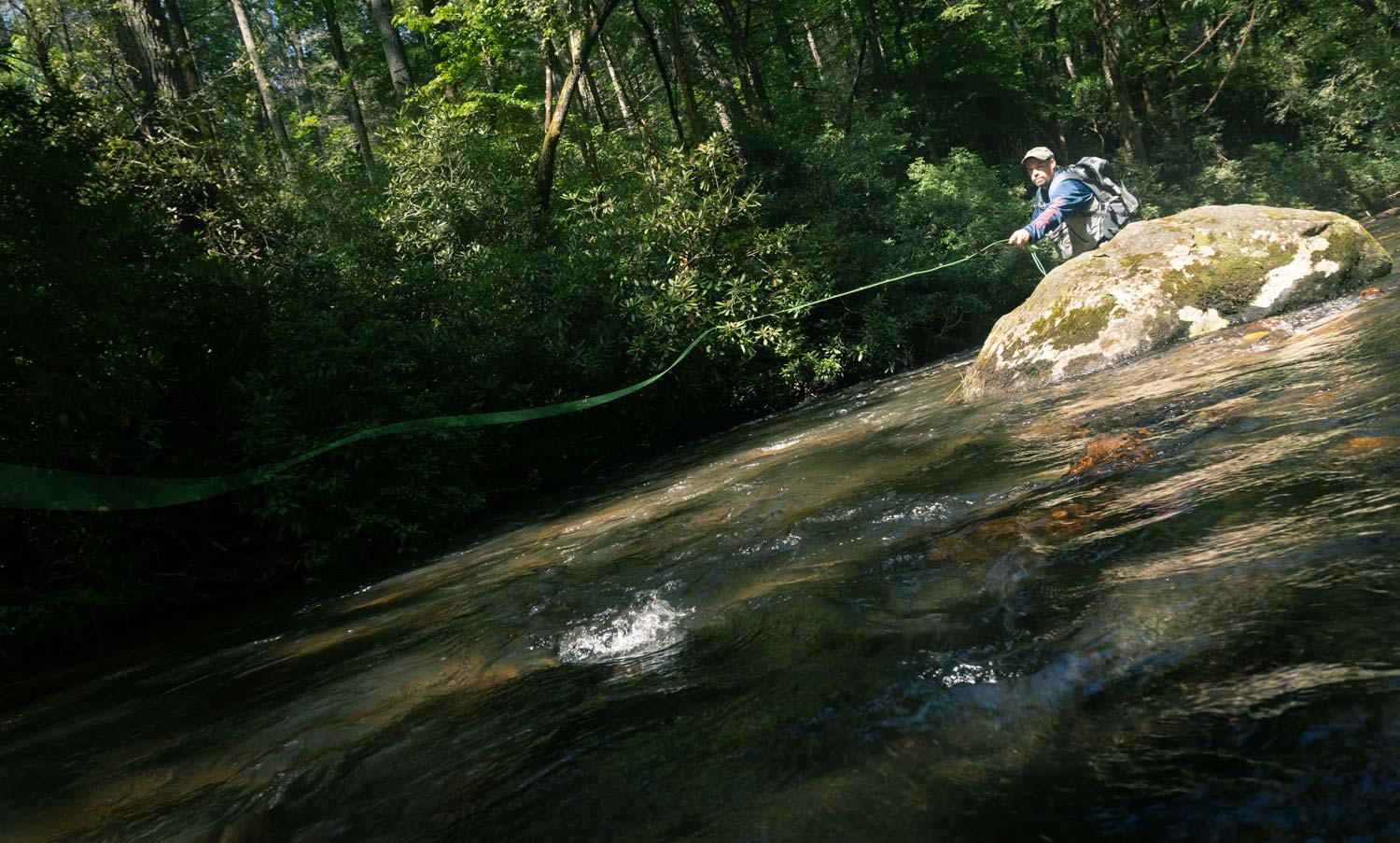
By Jason Tucker
ALEX WADED INTO THE POOL, PUSHING A BOW WAVE AHEAD OF HIM THAT LAPPED AGAINST THE GRASS ON THE FAR BANK- NOT THAT FAR, AS HE COULD ALMOST REACH IT WITH THE TIP OF HIS ROD.
What is he doing? I thought. He’s going to put down every fish in the bend and pool. I would have pushed through the tag alders over the shallow sand so as to stay out of the pool. Yet there Alex stands, waist deep in water, almost on top of where he needs to cast. A few feet downstream, near where he had just walked, a good fish rose, and I fought the urge to flip my fly out there, leaving the first cast to Alex.
Alex made a single cast, and his fly disappeared with a loud slap. He set the hook and chaos ensued as his line rooster tailed through the water. The fish turned and swam back up to Alex, then ran back downstream, streaking past my leg on the surface- the biggest brook trout I’ve ever seen outside of Canada. It was easily four pounds and probably five. Big and thick and over twenty inches long. Then it turned and dogged its way upstream, and the leader parted for no apparent reason. It wasn’t even under that much pressure at the moment. We all stared in disbelief at the dangling end of his line.
I don’t know why Alex’ approach that night resulted in hooking up on his best brook trout ever (if you count fish not landed). My best guess is that it was late evening and the fish, anticipating the evening hatch, had moved out to feed, and the dropping light gave them confidence. Normally I would have thought he had buggered the entire hole, but that night his approach resulted in a hookup and one of the most bittersweet memories in our time fishing together. Alex still can’t talk about it.
Alex is a cautious fisherman. He wears camo when he fishes for brook trout and is generally very cautious. I don’t wear camo, but it’s not a bad idea. Small streams, being small require an extra level of stealth. Here are some things you can do to increase your success on small streams.
ELEMENTS OF STEALTH
Clothing- camo, dull colors, sky blue
Stealth on any stream starts at home with your clothing. Leave the bright colors at home. The dull colors most waders come in is a good place to start. Don’t hesitate to wear your hunting camo. Dull shades of green, brown and grey will work best. I personally don’t care for black- I think it offers too much contrast. Because the fish are looking up I think sky or pale blue is not a bad choice, especially as part of a camo pattern. On a small stream you are fishing in tight quarters, sometimes almost on top of the fish, and you want to blend with the background as much as possible.
Observation- slow down!
I can’t tell you the number of times I still plow into a stream only to realize I have bumped a good fish. I personally do not like fishing close to the access, and at times don’t even care that I’m bumping fish on my way to where I really want to fish. But when I get to there, it really hurts to step into the stream only to realize I’ve blown up the spot by not being more observant. I’m looking both for fish and also what they may be feeding on. Often we know to some degree what’s going on- you’re fishing a specific hatch, or it’s midsummer and you’re fishing terrestrials. Maybe the weather is cool and
Read More »Fishing The Woolly Bugger
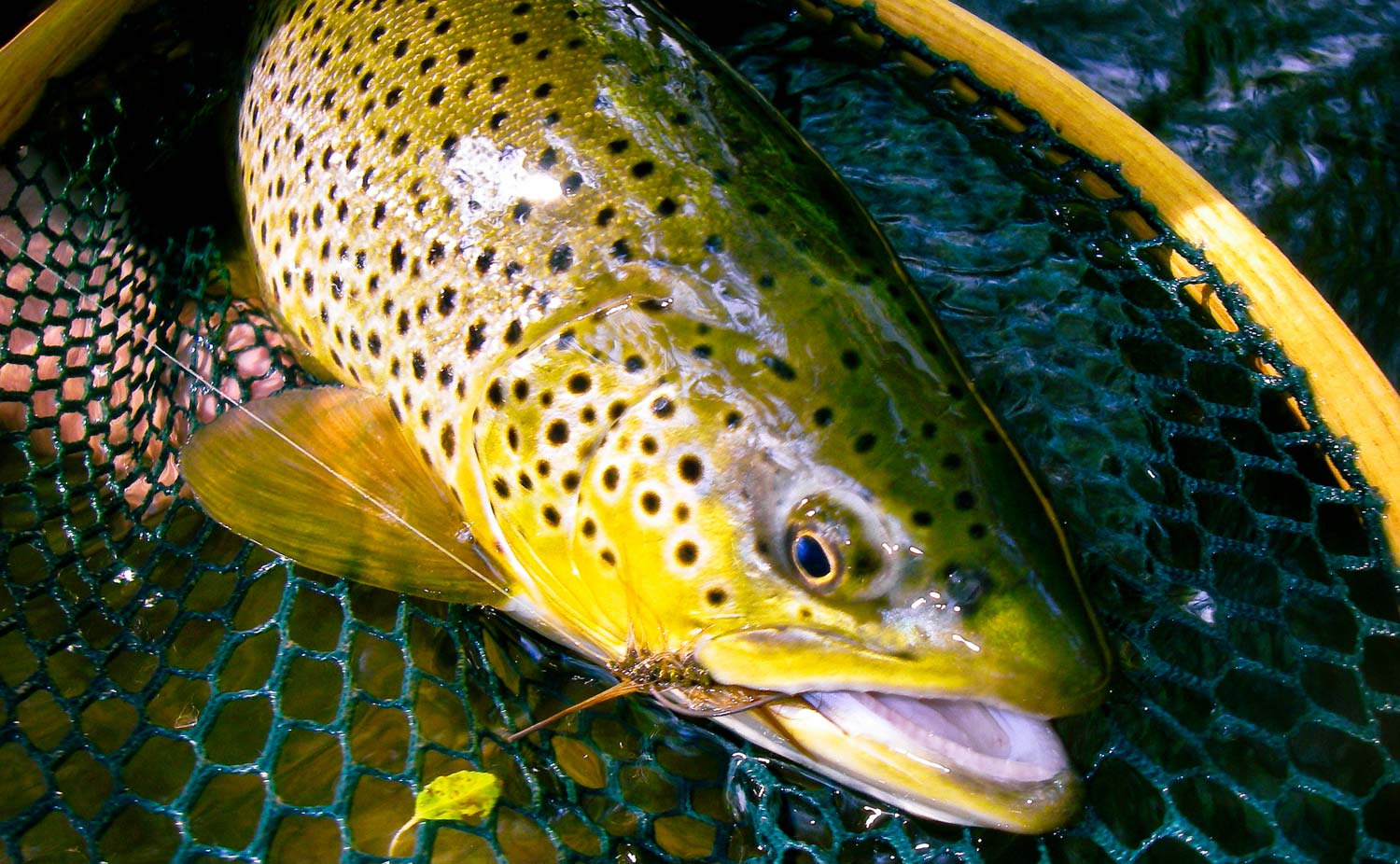
By Louis Cahill
There are a lot of “right ways” to fish a Woolly Bugger.
I know, I know, this is super basic but after we published the article “The Woolly Bugger Isn’t all that, Or is it?,” I got emails asking how to fish the Bugger. I’ve joked about writing this article plenty of times and now I think I was being a jerk. We obviously have readers who want the info, so here is is.
One of the emails I got asked specifically if the Bugger should be fished on a nine foot tapered leader or a five foot level leader. My immediate reaction was, “It depends on how you’re fishing it.”
The reason the Woolly Bugger is possibly the greatest fly pattern ever tied is that there is almost no wrong way to fish it. It’s one of those rare patterns that looks like so many different types of food, it’s hard to make it unappealing. And not just for trout, I firmly believe you can catch anything that swims with a Woolly Bugger. I regularly wear out bonefish on a tan bugger.
For the purpose of this article I’m going to focus on techniques for trout fishing. The Bugger can be fished as a nymph or a streamer and even an emerger. If you figure out how to tie one that will float, I guarantee it will work as a dry under the right conditions.
Let’s look at some techniques for fishing the Woolly Bugger is some of these different roles.
FISHING THE WOOLLY BUGGER AS A NYMPH
It’s hard to beat a dead drifted Bugger for catching trout. Sink it with a split shot or build weight into the fly to get it down to the strike zone. Fish it under an indicator or high sticked on a tight line. Whatever approach you prefer, with the right amount of weight, a dead drifted bugger will produce.
Some of the food items a bugger can pass for, when fished in this way, are stonefly nymphs, helgermites, craneflys, damsel and dragon flies, mayfly nymphs (in appropriate sizes), crawfish, leaches, baitfish, and tadpoles. The dead drift will almost always work but if you think about that list some other techniques become obvious.
Remember I mentioned emergers?
Read More »Strategies For DIY Bonefishing

By Rod Hamilton
I RECEIVE EMAILS EVERY DAY FROM ANGLERS LOOKING FOR ADVICE ON HOW TO CATCH BONEFISH ON THOSE DAYS WHEN THEY ARE NOT WITH A GUIDE.
The email usually goes something like this: “I do fine when I’m guided, but can’t seem to either find fish or get them to eat when I am on my own.”
“What am I doing wrong?”
DIY-6I’ve been bonefishing for twenty years and like most of us, spent the first five years fishing exclusively with guides. I thought I was getting pretty good and put my bonefish I.Q. at around 120. So, I tried it on my own, only to find out that it was actually my guide who was smart and my bonefish I.Q. was more like 35.
So game on, challenge accepted, and I have spent the last fifteen years learning everything I could about how to DIY for bonefish.
DIY-1There is a lot to learn to be successful on your own. After all, now you have to know where the fish are, how they react to tides, what they eat, see them before they see you and make a presentation that won’t send them into deep water. There is no boat to run you out three miles, instead a car, bicycle or kayak is your chariot to the flats.
Nothing replaces time on the water and most of the early lessons are going to result in fishless days, but let me see if I can ease the pain and help shorten the learning curve with some basic strategies for the DIY fisherman.
1. Learn to use Google Earth
Instead of spending those hours at home dreaming about your upcoming trip, spend that time scouring satellite images to find places others might not easily discover. The hardest bonefish in the world to catch are those that have been trained by the few hundred anglers before you.
2. The DIY Fly Box is different then the Guide Fly Box.
Read More »Small Wonder, Middle Georgia’s Shoal Bass
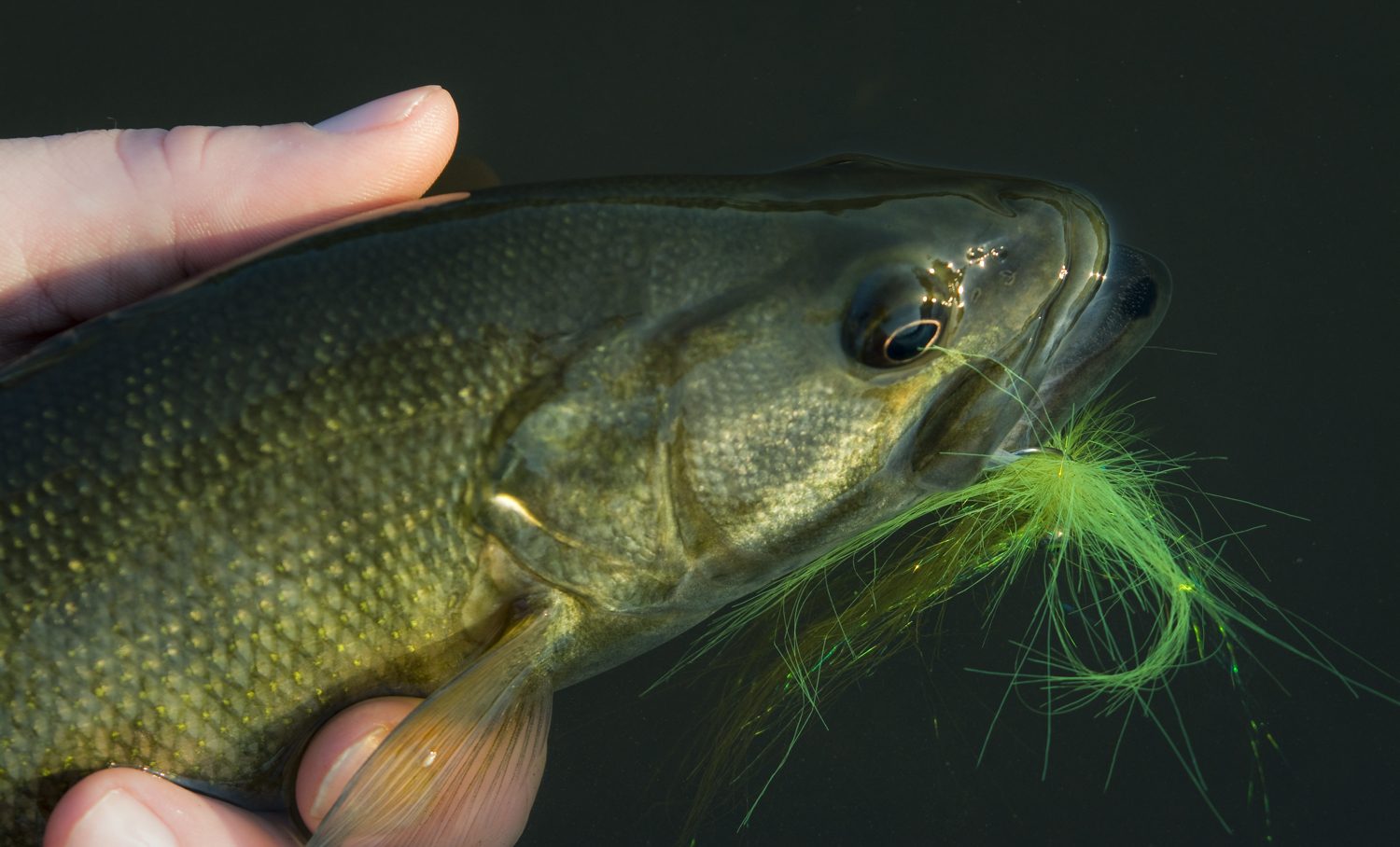
By Justin Pickett
THE SETTING SUN IS WARM AT MY BACK AS I STAND AT THE REAR OF MY JEEP.
I slip on my guard socks and wrench down on my boots until I’m happy with the fit. No need for waders today. The deep south humidity is smothering as I place my Buff around my neck. I dig through the mess that is my gear bag, and pull out my reel and place it on my six weight rod. I’m anxious as I slip the fly line through the guides, but I know that haste often does not lead to happiness. “Slow it down, take your time,” I remind myself.
I peer into my fly box, looking at all of its different inhabitants. Flies I’ve either bought, tied, found, or that have been gifted to me. The colors, the variety of materials. The unique purpose each pattern serves. There are several flies that have not so much as kissed the water, and a select few that have some serious frequent flyer miles. I don’t know why I stare for so long. It’s almost comical. I knew what fly I was going to fish with before I left the house.
I smirk and shake my head as I grab and inspect my go-to fly. It’s a simple fly, but a deadly one. It is a variant of an old, tried and true pattern. The materials reside around a size #4 streamer hook and are dark olive in color. The free flowing, marabou tail has just a bit of flash added to aide in piquing the interest of the fish that I seek. The body is wound with hackled feathers, and within the body are several rubbery legs, protruding from each side just before the nickel conehead. Ah, that’s where the life of this fly exists. The long, webby schlappen and the speckled tentacles breathes this fly to life. It is not prey. It is a seeker, and find, it does. My quarry just can’t seem to resist it once it is swung through their space. Add a little dash of confidence and a pinch of mojo, and how could one go wrong?
As I look over the bridge I can see fish rising, splashing at the surface each time they take a mayfly that has perilously drifted into their feeding lanes. Topwater isn’t my game plan though. The river is running at the perfect flow, just a touch high, and that’s just how I like it. I know this is going to be a great evening. The “magic hour” is approaching as I cinch down on my loop knot and hang my fly on the hook keeper. I set my drag. I grab my sling pack and clip my hemostats to the shoulder strap. I check again to make sure that I have my fly box and the few tippet spools that I need.
For those that fish within its banks, this location is endearingly known as “The Promised Land.” It is a
Read More »Stream Etiquette, Two Stories About How To Share The Water
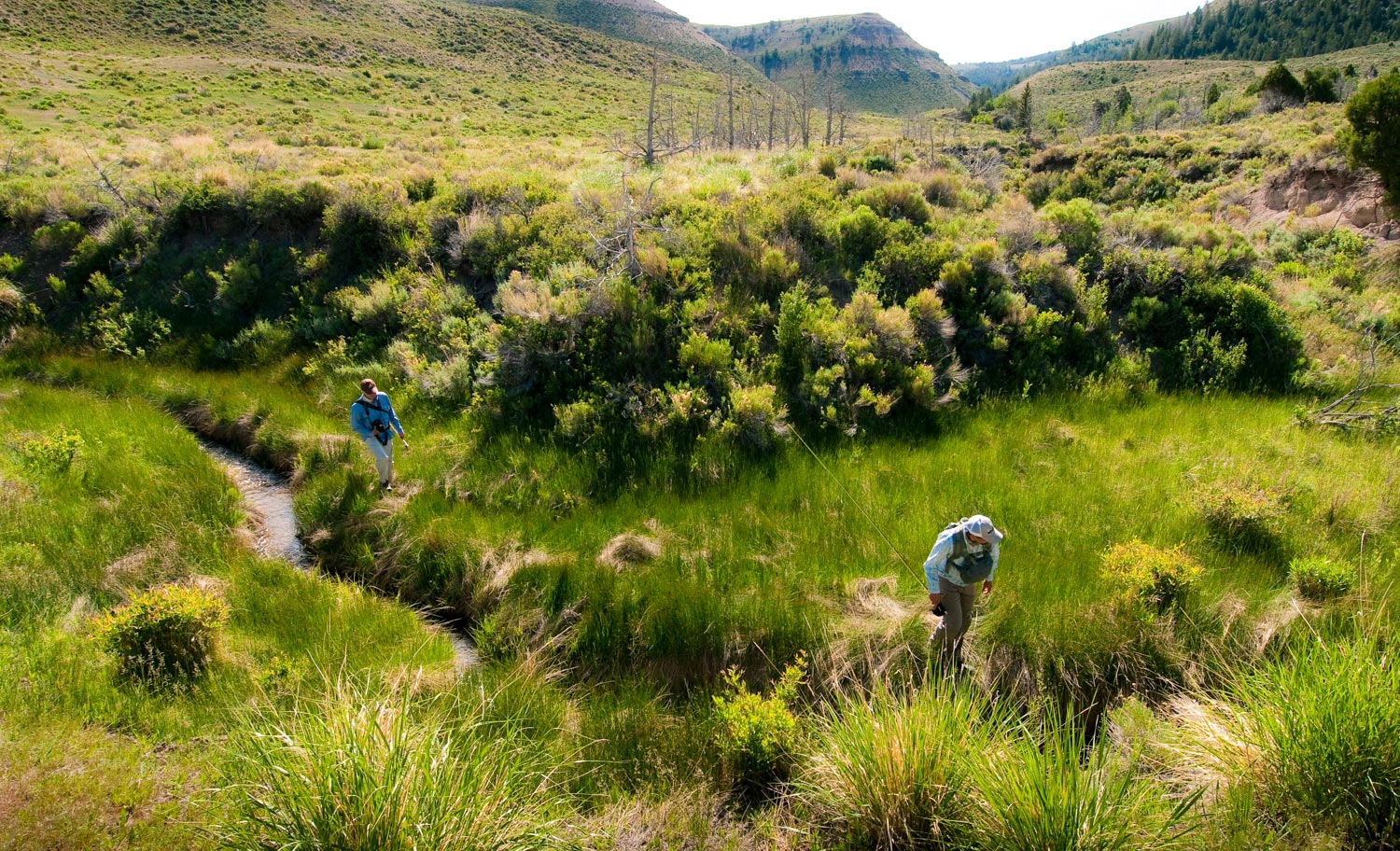
TWO EXPERIENCES IN TWO DAYS LEFT ME WITH TWO VERY DIFFERENT FEELINGS.
I spent a couple of days fishing in North Carolina a couple of weeks ago. A dear friend came in from Colorado and gave me the chance to share some of our eastern rivers. We had two close encounters with other anglers which proved to be lessons in stream etiquette. One a great example of how to share the water, the other not so much.
Stream etiquette is often complained about but seldom taught. What’s expected on the river changes from place to place but there are some simple ideas of respect and tolerance that are universal. If you’re not sure what’s cool and what’s not, I hope these two examples are helpful.
ENCOUNTER #1
My buddy and I arrive at a favorite piece of water with about an hour and a half of light left. The run is down in a gorge and we inspect it from above before hiking down. There’s no guarantee that it hasn’t been recently fished but no one is there now, so we head to the water. We are both fishing tenkara rods and my buddy is ready to fish but I want to make a fly change before fishing this new spot. I line up across from the first pool and start rigging while my buddy heads to the next pool upstream. Just then another angler rounds the corner and calls out. He has hiked up from down stream and was out of sight when we inspected the water.
To my mind, this is his water. As I see it,
Read More »Cool Shots at Bonefish
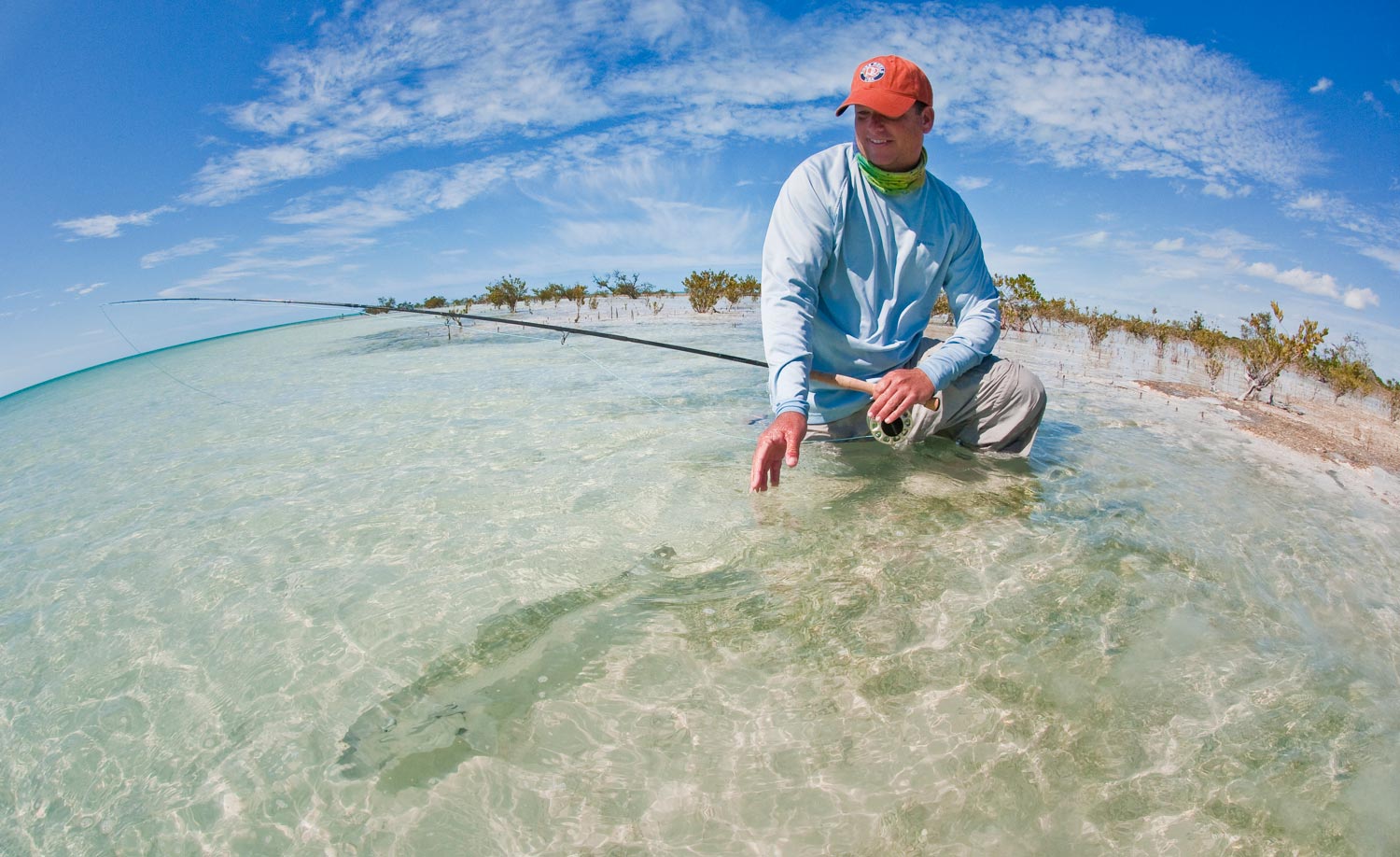
WHAT MAKES A REWARDING BONEFISH TRIP.
It’s hard to fly off to an exotic location for a week of fishing without having a goal, or at least some expectations. The first can be dangerous and the second disastrous. Still, one or the other is generally present on a fishing trip and the more the trip costs, the higher they usually are.
I’ll never forget my first bonefishing trip. My expectations were to actually see a bonefish and my goal was to not make a complete ass of myself when I did. (It’s good to have goals, right?) That trip did so much more than exceed my expectations. It was an awakening of sorts and the beginning of a life long obsession.
On subsequent trips I adjusted my goals. I wanted to catch a lot of bonefish. I wanted to catch big bonefish. I wanted to increase my hookup ratio. I wanted to catch bonefish on my own. I wanted to develop my own fly patterns. Eventually I just wanted quality fishing with good friends. One by one, all of those things went in the done column and I kept going bonefishing.
There’s not a thing on that list that I don’t still enjoy doing. Who doesn’t want to catch a lot of fish, or a big fish, or have a great day with a good friend. With the exception of the friend however, they all become less important with time. Most days all I really need is to stand on the bow and glide across a beautiful flat.
So what makes a day of bonefishing exceptional?
Read More »Fly Fishing Bass Ponds 102
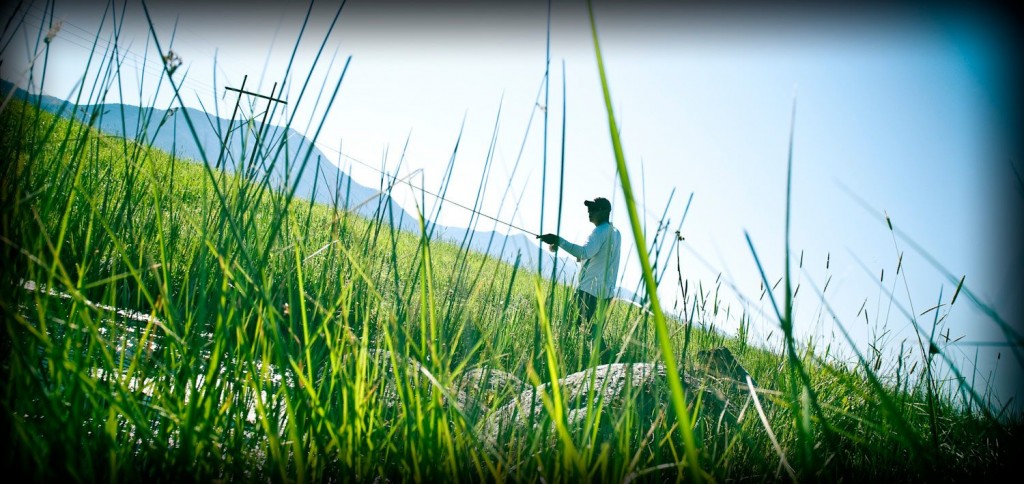
UNDERSTANDING DIFFERENT TYPES OF STRUCTURE AND HOW TO FISH THEM
I promised everyone I’d write a Fly Fishing Bass Ponds 102, if people showed enough interest from my 101 post. I was blown away from the emails and comments that flooded in, after the first post went live. I covered quite a few topics in the first post but here’s a few more tidbits of information for all you warm-water fly fishing junkies out there.
As a little kid, I was a bass fishing maniac. A good friend of my Father’s fished a lot of tournaments for fun and he took it upon himself to take me under his wing, and teach me the skills I’d needed to become a proficient bass fisherman. One of the greatest things he did during his mentorship was take me to several professional bass fishing seminars. On several different occasions, I had a front row seat to listen to Hall of Fame bass fishing legends like Bill Dance, Denny Brauer, Rick Clunn, and Larry Nixon. Notepad and pen in hand, I wrote as fast as I my fingers would move as the pros talked about how they consistently caught bass. It was at these seminars that I learned the behavior of bass and how to catch them. If you want to improve your warm-water fishing, I highly recommend attending a seminar in your area. Most are reasonably inexpensive, and If you don’t walk away with more knowledge afterwards, you either have an ego that needs to be checked, or you weren’t listening. Most of what you’ll find the professionals talking about is catered towards fishing large lakes, but almost all of the information can be converted and used for fishing on bass ponds.
One recurring theme I noticed is that everyone of those bass fishing legends talked in great detail about how important it was to understand and locate structure. Talking about bass structure is no different than me talking to my clients about reading trout water. Both are critical for anglers, because it allows them to quickly locate hotspots, but more importantly, it allows anglers to distinguish productive water from unproductive water. Structure is anything in the water that fish are drawn to that allows them to live comfortably and feeding efficiently. Structure serves two purposes for bass. One, it provides habitat that becomes a magnet for their forage food, and bass always live close to their food sources. Two, it provides highly efficient ambush points for bass to camouflage themselves so they can feed easily. Structure can be above the surface, on the surface or below the surface. Just remember that there’s two main types of structure. The first is cover, such as lily pads, weed beds (ex. hydrilla or millfoi), overhanging foilage along the banks, docks or floating or submerged wood cover. The second form of structure is irregularities of the bottom and composition of the water you’re fishing. Examples of this would be creek channels, flats adjacent to deep water, edges (sand or mud bottom substrate changing to rock or deep weed beds meeting open water). If you’re lucky enough to ever find both types of structure together you’ve hit the jackpot. It should be loaded with a high concentration of bass, and should also hold fish pretty much year round. Search out, locate and spend your time focusing on fishing these two types of structures, and you’ll eventually find success. Again, this concept is just like trout fishing, where I instruct my clients to pass over empty or dead water and search out prime habitat that provides trout what they need to survive. The only time structure can be thrown out the window is when bass are chasing baitfish out in open water. It’s not really a problem in bass ponds though, because there’s usually not enough water available, but keep it in mind, if you’re fishing larger water in a boat, and you see bait fish activity on the surface and sporadic topwater bites, it should be a clue that bass are chasing baitfish. However, even in this scenario, there’s a good chance structure will be located near by because bass use it to corral and concentrate the schools of baitfish to feed on them more efficiently. In ponds bass usually corral forage food to structure or to the banks.
Aquatic Vegetation
Generally, there’s two kinds of aquatic vegetation you should locate and fish. The first type are weed beds that root from the bottom and grow to the surface, forming mats. Examples of this kind of aquatic vegetation would be lily pads, hydrilla or milfoil. You’ll want to be fishing fly patterns here that have good weed guards so you can retrieve your fly without snagging or picking up vegetation every cast. I focus first on presenting my fly to the edges of the surface vegetation, where the weeds stop and the open water begins. After I do that, I’ll then cover the vegetation with follow up presentations inwards. Working my way farther and farther into the vegetation, with each consecutive cast. Don’t make the mistake of thinking, that just because the weeds are thick that the bass can’t see your fly well enough to eat it. I’ve caught some of my largest bass on ponds in places like this. I’ll never forget a nine pound bass I landed, that busted through a solid foot of hydrilla to eat my fly. There’s no way it could have seen my fly, but it utilized its inner ear and lateral line together and that allowed it to pickup enough subtle high and low frequency vibrations to track my fly in the water, just like state of the art radar or sonar equipment. Lastly, look for openings or pot holes in surface vegetation mats. Work your fly over the mat and when you get to the open spot, let it rest or sink into the hole. Bass often will hold close to the locations, but it’s also one of the few spots you can present your fly below the vegetation in these areas, and that will allow you to get your fly closer to the bass and increase your chances of hooking up. My two favorite flies for fishing surface vegetation are weedless frog patterns and long weedless worm style flies (long zonker or palmered chenille flies). One main tying material I use for these worm patterns are wide shoe lace strings that you can purchase at your local sporting goods or foot locker store. They usually have them available in most colors, even fluorescent and chartreuse. One day I’ll showcase the fly pattern on the blog. For now, hopefully it will spark enough interest for you to experiment tying a similar version yourself.
The second form of aquatic vegetation you’ll run into is deep water weeds. You won’t be able to see it but you’ll notice tidbits of it fouled on your fly after retrieves. They usually are found in five to ten feet of water. Sometimes more or less depending on how clear or muddy the water is. Theres always a little space between the weeds and the bottom, and that’s where the bass like to hold. A tungsten cone head long worm style fly does a great job of working through the grass without picking it all up. It’s tedious fishing, but there are times when the bass will be concentrated in this deep water vegetation on ponds and you’ll find great success if you
Read More »What Cataracts Have Taught Me About Seeing Fish
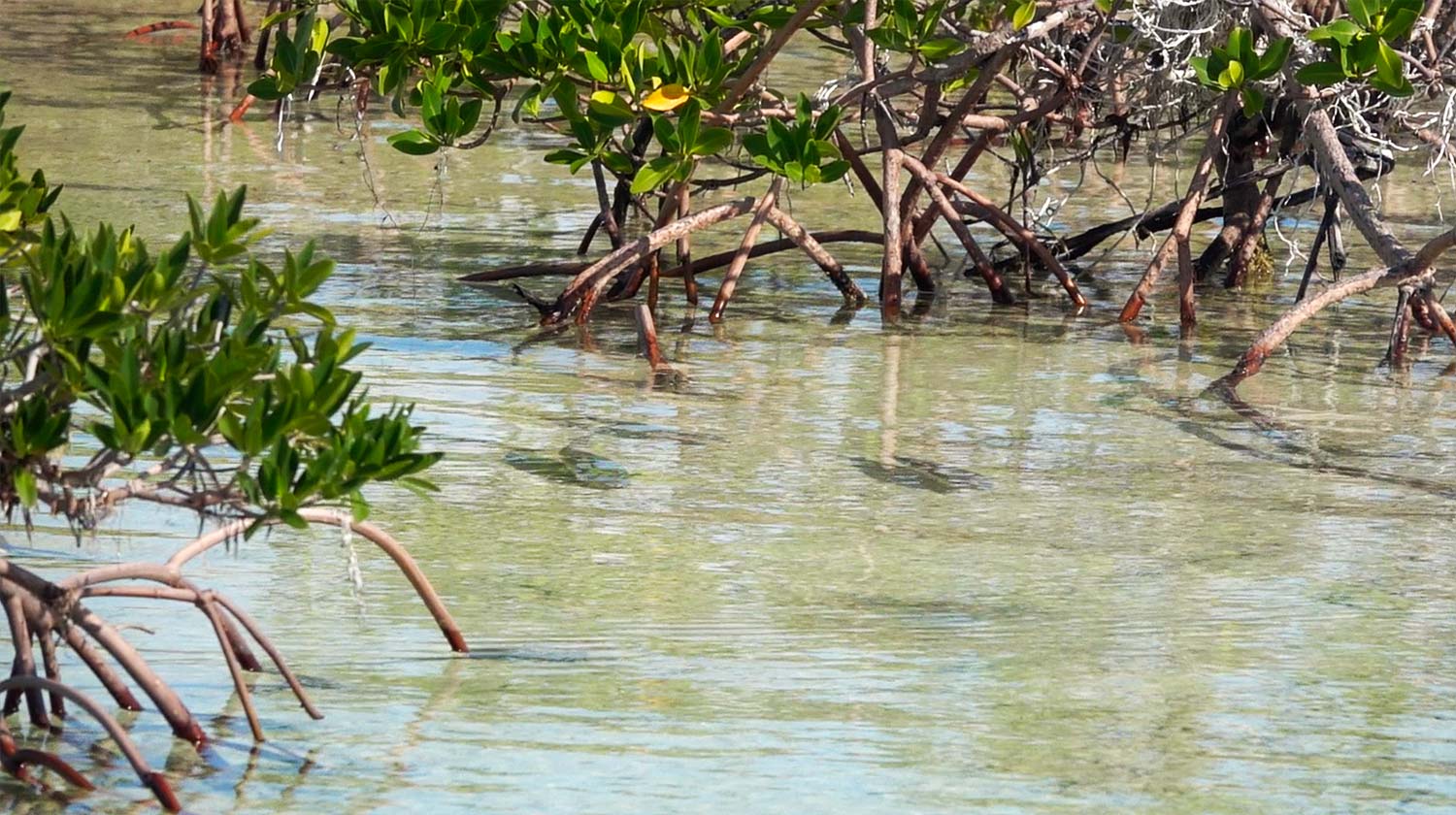
There’s more to spotting fish than having good eyes, so don’t assume you can’t see them.
I’m used to being told I have good eyes. Among anglers, that means the ability to spot fish. In truth, I have never had good eyes. I’ve worn glasses my whole life and had to remember where I put them at night because I couldn’t find my glasses, without my glasses. Thanks to the great prescription program at Smith Optics, I’ve always had good fishing glasses and could see well enough. It wasn’t until I developed aggressive cataracts, last year, that I really started to struggle.
It’s no secret that I do a lot of bonefishing. They don’t call bonefish the ghosts of the flats for no reason. Their natural camouflage makes them very difficult to see. When I started losing my sight, my greatest fear was that I would no longer be able to spot bonefish. This fear only got worse in the weeks following my first lens replacement surgery. My vision was pretty poor at first and even now, a month past my second surgery, it isn’t what I’d like. I’m confident that it will get to where I want it, but when I headed to Abaco for bonefish, I was pretty nervous about how I would perform.
It turns out I did pretty good. It was a huge relief to see my first bonefish, and even better to hear, “good eyes,” when I spotted a fish before my guide. Still, my new eyes are not what they should be and it taught me a few things about what it means to see fish. I see plenty of anglers give up on the idea that they will be able to see fish before they cast to them. If that sounds familiar, here are a few things to think about when you’re looking for fish.
You can actually find fish with surprisingly poor visual acuity.
Read More »Dreaming of Steelhead
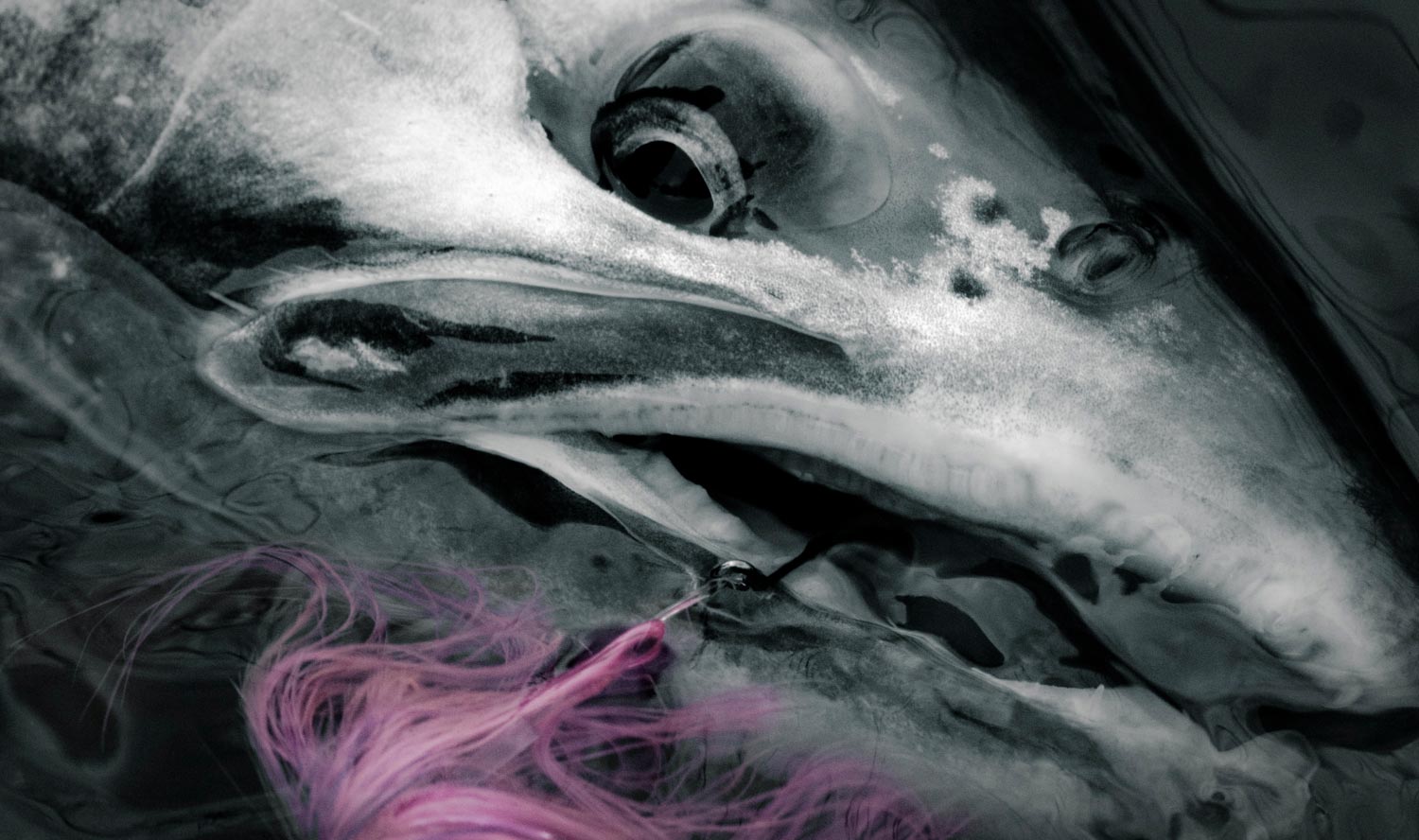
Not epic, fish hoisting, hero shoting, steelhead fishing but, ass backwards, pointless, penitent steelhead fishing. Swinging tiny flies on floating lines in the turbid, chocolate waters of spring run off (and this is my favorite part) in Colorado’s Black Canyon. If you’re not a steelheader, I’ll break this down for you C.G. Jung style.
Read More »Eye Surgery Update #7
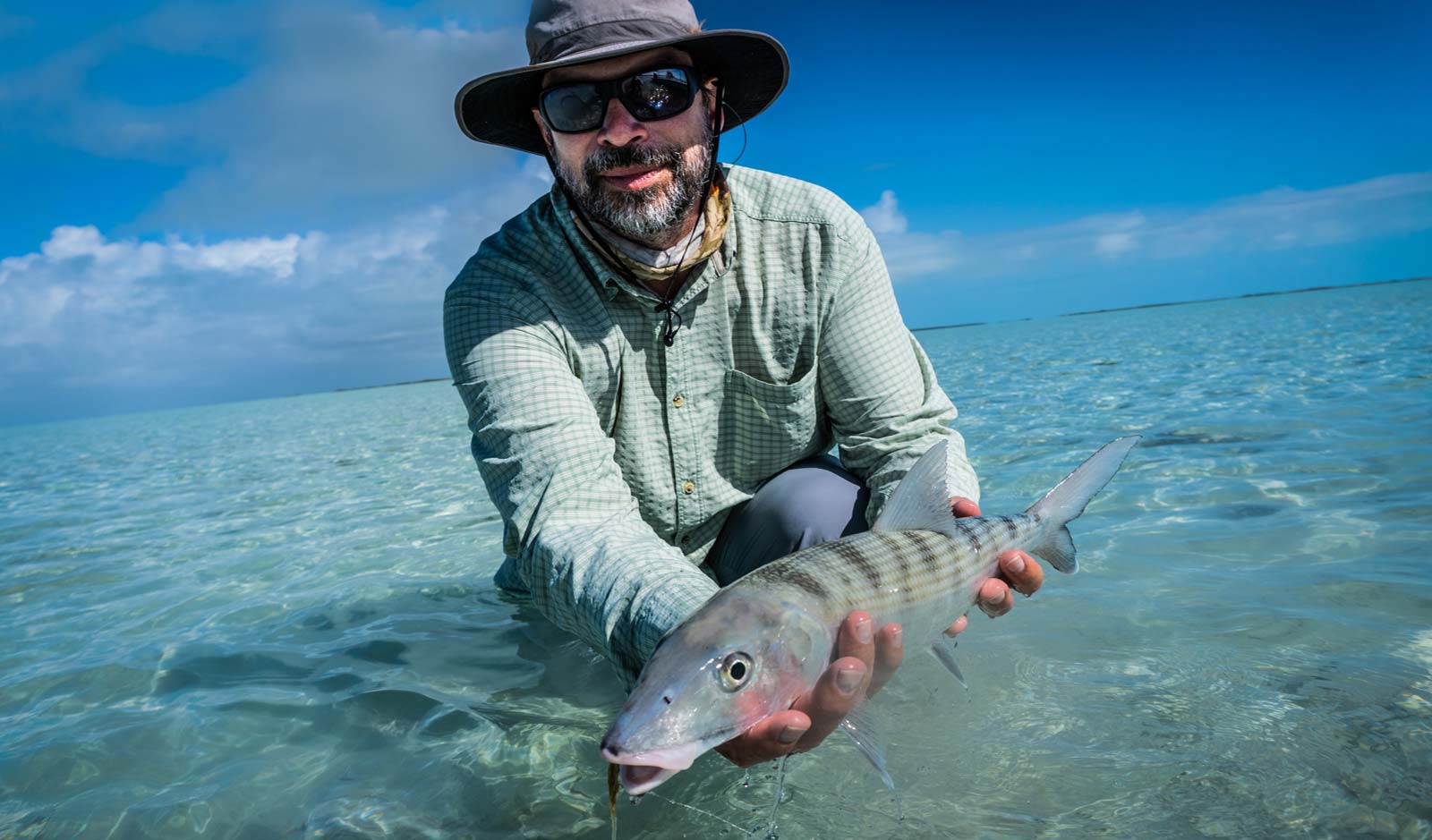
Who’s ready for some good news?
Surgery number seven was a success. My Retina is stable and, so far, no complications. I’m 17 days post-op today and the doctor gives me a thumbs up. If everything goes well just one more surgery. This is the best news we could hope for.
For now my job is just to take care of myself, be healthy, and try to get back in shape a little while I can. We will reevaluate in February and, if nothing has changed, schedule surgery number eight. The goal of the next surgery is to remove the silicon oil, put in my eye to stabilize the retina like a cast. This procedure is not without risk. Nothing is when it comes to your eyes. The doctor judges a one in twenty chance that my retina could detach again, most likely on the operating table. If that were to happen, we’d be back to square one with limited options. I feel very positive though. I have absolute confidence in my doctor and my body feels like I am healing and getting stronger. I really feel like I’ve turned a corner.
Removing the oil from my eye will have a couple of benefits. There will be some visual improvement, though it will be modest. My macula is pretty much shot so 20/200 vision is about as good as I can expect. I will however, hopefully, see two big improvements. The optical index of the oil causes double vision, especially at close distance. That should be gone once the oil is removed and my brain gets used to the new signal. The other big change relates to the condition of the oil. With time, the oil emulsifies, becoming cloudy with more and more bubbles in it. Right now it’s kind of like a snow globe. If I hold still, with my head vertical, it clears up reasonably well. If I look down or move around a lot, it looks like I have a piece of masking tape on my glasses. I try not to complain, but it is very annoying. That should disappear too.
The big benefits to the oil removal are more related to my general health. In time, the oil will drive up my eye pressure causing glaucoma. That’s a when, not an if. If that happened and my retina were not stable, I’d be between a rock and a hard place. Basically, glass eye territory. That’s my biggest motivation. There is another issue
Read More »